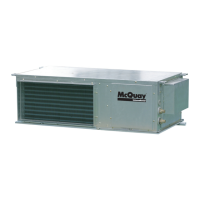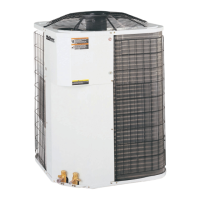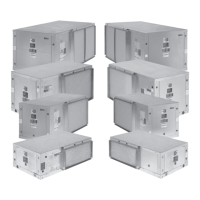Cleaning System Flushing
1. Prior to first operation of any conditioner, the water circulating system must be cleaned and flushed of all
construction dirt and debris.
If the conditioners are equipped with water shut off valves, either electric or pressure operated, the supply
and return run outs must be connected together at each conditioner location. This will prevent the
introduction of dirt into the unit.
2. Fill the system at the city water makeup connection with all air vents open. After filling, close all air vents.
The contractor should start main circulator with the pressure reducing valve open. Check vents in
sequence to bleed off any trapped air, ensuring circulation through all components of the system.
Power to the heat rejecter unit should be off, and the supplementary heat control set at 27ºC.
While circulating water, the contractor should check and repair any leaks in the piping. Drain at the lowest
point(s) in the system should be opened for initial flush and blow down, making sure city water fill valves
are set to make up water at the same rate. Check the pressure gauge at pump suction and manually
adjust the makeup to hold the same positive steady pressure both before and after opening the drain
valves. Flush should continue for at least two hours, or longer if required, to see clear, clean drain water.
3. Shut off supplemental heater and circulator pump and open all drains and vents to completely drain down
the system. Short circuited supply and return run outs should now be connected to the conditioner supply
and return connections. Do not use sealers at the swivel flare connections of hoses.
4. Trisodium phosphate was formerly recommended as a cleaning agent during flushing. However, many
states and localities ban the introduction of phosphates into their sewage systems. The current
recommendation is to simply flush longer with warm 27ºC water.
5. Refill the system with clean water. Test the water using litmus paper for acidity, and treat as required to
leave the water slightly alkaline (PH 7.5 to 8.5). The specified percentage of antifreeze may also be
added at this time. Use commercial grade antifreeze designed for HVAC systems only. Do not use
automotive grade antifreeze.
Once the system has been filled with clean water and antifreeze (if used), precautions should be taken to
protect the system from dirty water conditions. Dirty water will result in system wide degradation of
performance and solids may clog valves, strainers, flow regulators, etc. Additionally, the heat exchanger
may become clogged which reduces compressor service life or causes premature failure. A System
Saver® from McQuay International should be employed to continuously remove solids as the system
operates. Contact your local representative for further information on this device.
6. Set the loop water controller heat add set point to 21ºC and the heat rejection set point to 29ºC and
supply power to all motors and start the circulating pumps. After full flow has been established through all
components including the heat rejecter (regardless of season) and air vented and loop temperatures
stabilized, each of the conditioners will be ready for check, test and start-up, air balancing, and water
balancing
48
